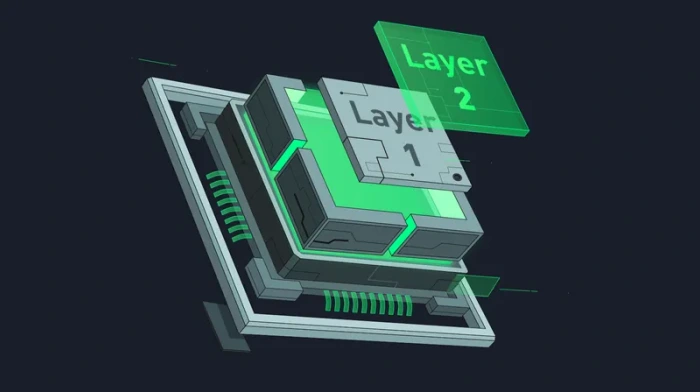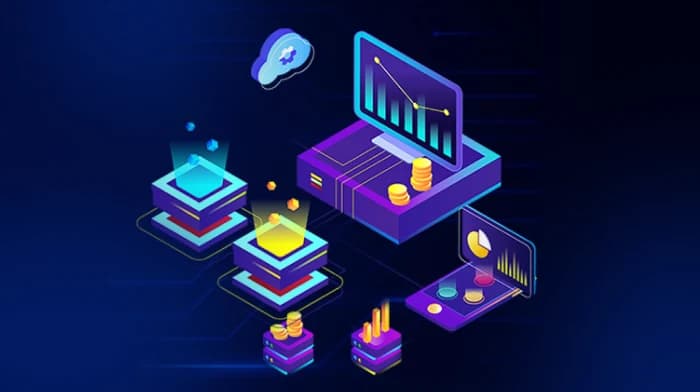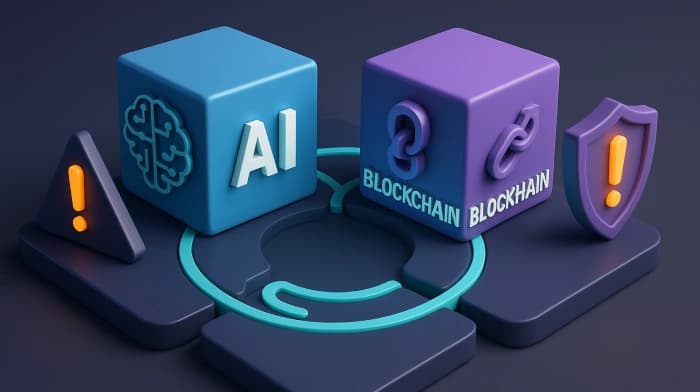
Introduction
The world of blockchain is booming, with a staggering 420 million people around the globe owning cryptocurrency as of 2023. This explosive growth is putting a strain on the infrastructure of blockchain networks, affecting how they function.
For blockchain to really take off, it needs to be able to handle a volume of users and transactions. Developers have been working on some ways to get around these limitations and make blockchain more scalable.
Two main approaches have emerged:
- Layer 1 scaling solutions
- Layer 2 scaling solutions
These are two types of scaling solutions being explored to improve the performance of blockchain networks.
The Critical Importance of Blockchain Scalability
The importance of scalability in blockchain cannot be overstated. It's a factor that affects:
- How well a network operates
- The kind of experience users have
- Its ability to reach a wider audience
Without scalability, blockchain technology would struggle to support large numbers of users, hindering its potential for mainstream acceptance.
Key Benefits of Scalability
Transaction Processing Speed
The ability to process more transactions per second is crucial for real-time applications. It means faster confirmation times and a seamless experience for users.
Cost Efficiency
By scaling up, it's possible to:
- Reduce transaction fees
- Cut back on energy consumption
- Make blockchain a practical and affordable option for industries of all kinds
Network Stability
When a network is designed to handle high traffic, it's more likely to remain stable during periods of high demand. Congestion and delays are less of an issue, and transactions are less likely to get held up.
Innovation Opportunities
When scalability improves, it opens the door to all sorts of possibilities:
- Complex decentralized applications become more feasible
- DeFi platforms can operate more efficiently
- Developers are free to explore ideas that were previously hindered by network limitations
A scalable blockchain network can provide an overall better experience while reducing costs and maintaining stability during high-demand periods.
Understanding Layer 1 Scaling Solutions
When it comes to blockchain technology, there are layers that work together to make the whole system run smoothly. The first layer, often called Layer 1, is like the foundation of a building.
Core Concept
Layer 1 solutions involve making changes directly to the blockchain protocol itself. This can involve:
- Tweaking the consensus mechanisms (the rules that govern how transactions are verified)
- Adjusting the block size (which determines how many transactions can be processed at once)
- Modifying other fundamental aspects of the protocol
By making these core parts of the protocol more robust, the whole system can handle more transactions and support a larger number of users.
Key Characteristics of Layer 1 Solutions
- Targeted improvements to the underlying protocol, which can simplify and speed up how transactions are processed
- Fundamental changes to the blockchain's core architecture, as opposed to adding solutions on top of it
- Direct protocol modifications that affect the entire network
Popular Layer 1 Scaling Methods
Sharding
Sharding breaks down the blockchain into smaller pieces called shards. Each shard can operate on its own, handling a portion of the transactions at the same time as the others.
When you've got multiple things happening at the same time, like a bunch of transactions all being processed together, it can really speed things up. The upcoming Ethereum 2.0 is an example of this in action, using sharding to boost the number of transactions that can be processed.
Consensus Mechanism Improvements
One of the hurdles for blockchain systems is the way they agree on what's real and what's not. The old way of doing things, called Proof of Work, is pretty heavy on resources and needs a lot of computing power.
Making the switch to newer approaches can greatly boost scalability:
- Proof of Stake (used by Cardano)
- Delegated Proof of Stake (used by EOS)
These systems slash the amount of computing power and energy needed to run the network.
Advantages and Limitations
Advantages:
- Enhancing scalability directly at the protocol level leads to significant increases in transaction throughput
- Many solutions preserve or even strengthen network decentralization
- Crucial for maintaining security and preventing censorship
Limitations:
- Implementation complexity - making alterations to a protocol introduces risks and vulnerabilities
- Risk of centralization if certain solutions favor specific nodes or validators
- High-stakes implementation - fundamental changes can have major impacts on security
- Extensive testing required - careful planning and risk assessment is essential
Layer 1 implementations are a big deal and need to be approached with caution. Because they're so fundamental to the network, they can have a major impact on security.
Understanding Layer 2 Scaling Solutions
Layer 2 solutions operate above the base protocol, using a variety of techniques like off-chain transaction handling and secondary protocols to improve scalability.
Core Concept
There's a significant difference between Layer 1 and Layer 2 solutions. While Layer 1 solutions need to change the core protocol, Layer 2 approaches don't. They can improve scalability without messing with the underlying blockchain architecture.
This is possible because Layer 2 solutions can handle transactions away from the main chain, only settling on it when they need to. This makes transactions faster and more efficient, as the main chain isn't cluttered with every transaction.
Key Principles
The core of this approach is based on several ideas:
- Off-chain transaction handling - reduces congestion and makes the whole system more scalable
- Faster, cheaper processing - transactions can be processed faster and at lower cost without sacrificing security
- Selective settlement - transactions are only settled on the main chain when absolutely necessary
Types of Layer 2 Solutions
State Channels
State channels allow people to make lots of transactions without putting them on the blockchain right away. They do this by exchanging messages that are secured with cryptography. When they're done, they put the final result on the blockchain.
This works well for:
- Payment applications
- Online games
- Any scenario requiring fast, frequent transactions
Rollups
Rollups take a bunch of transactions, squash them together into packages, and periodically put these packages onto the main blockchain.
There are two types:
- Optimistic Rollups - execute transactions and rely on dispute resolution mechanisms to sort out issues
- zk-Rollups - use zero-knowledge proofs to verify transactions without giving away sensitive information
Sidechains
Sidechains are independent blockchains that are still connected to a main blockchain. This setup allows for:
- Faster transaction processing
- Space to experiment with different consensus mechanisms
- Asset transfers between chains
- Maintained interoperability
Plasma
Plasma involves creating tree-like structures where sidechains (child chains) are anchored to the main blockchain (parent chain). Transactions are grouped into blocks on the child chain, and the state is periodically settled on the main chain.
This approach benefits:
- Decentralized exchanges
- Tokenized assets
- Applications requiring high scalability and security
Layer 1 vs Layer 2: Detailed Comparison
Processing and Performance
Layer 1 Solutions:
- Process transactions directly on-chain
- Can lead to bottlenecks during periods of high activity
- Require extensive testing and validation
- Need coordination among all network participants
Layer 2 Solutions:
- Take load off the main chain by processing transactions off-chain
- Result in faster transaction times, especially in speed-critical situations
- Less complicated to implement
- Must ensure seamless integration, security, and compatibility
Security and Decentralization
Layer 1 Solutions:
- Maintaining or enhancing security and decentralization is a priority
- Any changes to the protocol can impact network integrity
- Focus on preserving the fundamental security model
Layer 2 Solutions:
- May introduce security challenges such as disputes over channels and data availability
- Can maintain transaction integrity if challenges are properly addressed
- Require careful evaluation of security trade-offs
Layer 1 vs Layer 2 Comparison
| Aspect | Layer 1 Solutions | Layer 2 Solutions |
|---|---|---|
| Implementation | Direct protocol changes | Built on top of base protocol |
| Transaction Processing | On-chain processing | Off-chain processing with periodic settlement |
| Speed | Can face bottlenecks during high activity | Faster transaction times |
| Complexity | Requires protocol overhaul, extensive coordination | Less complicated to implement |
| Security | Maintains/enhances security and decentralization | May introduce some security challenges |
| Cost | Varies based on implementation | Generally lower transaction fees |
Choosing the Right Scaling Solution
How do you decide between these two approaches to scaling? It comes down to several factors:
Key Considerations
Network Requirements
- What kind of transaction volume can you handle?
- How fast do transactions need to be processed?
- What's the budget for implementation?
Security Balance
When it comes to network integrity, it's essential to weigh the implications of scalability, security, and decentralization. This means:
- Considering the trade-offs
- Prioritizing solutions that maintain network integrity
- Evaluating long-term sustainability
Implementation Complexity
- Developing core protocol modifications requires significant effort and coordination
- Off-chain solutions may offer a more straightforward approach
- Each option must be evaluated carefully based on available resources
Application Requirements
Each application has its own requirements and performance needs. To determine whether a Layer 1 or Layer 2 solution is more suitable, it's necessary to examine:
- Specific use case needs
- Performance requirements
- User experience expectations
- Cost considerations
The goal is to find the best alignment between the solution and the intended functionality while maintaining the balance between scalability, security, and decentralization.
Use Cases and Applications
Layer 1 Use Cases
High-Volume Transaction Networks
When it comes to handling high-volume transactions, speed and efficiency are crucial. Networks that support:
- Cryptocurrency exchanges
- Payment processing platforms
- Enterprise blockchain applications
These need to be able to process on-chain transactions efficiently. Solutions involve optimizing the underlying architecture through sharding or improving consensus protocols.
DeFi Platforms
In the realm of decentralized finance, platforms like:
- Decentralized exchanges
- Lending platforms
- Liquidity pools
These require cost-effective transaction processing where every second counts. Improvements to a network's infrastructure can:
- Increase transaction throughput
- Bring down costs
- Make DeFi more practical and user-friendly
Layer 2 Use Cases
Gaming and Microtransactions
Gaming platforms where players might buy and sell items or services can benefit significantly from Layer 2 solutions. These systems work better when they use:
- State channels for quick, cheap transactions
- Off-chain processing for frequent interactions
- Periodic settlement for final results
Privacy-Sensitive Applications
Applications that need to keep information private, such as:
- Medical records
- Supply chain details
- Confidential business transactions
Layer 2 solutions can use tools that ensure data stays private while still allowing transactions to go through.
High-Frequency Trading
Applications requiring:
- Instant transaction processing
- Low latency
- Minimal fees
- High throughput
Future Outlook and Trends
The world of blockchain is on the cusp of a significant shift. Several trends are emerging:
Current Market Direction
Layer 2 Adoption
Layer 2 blockchains are poised to take the lead in adoption thanks to their ability to:
- Handle transactions at a faster pace
- Reduce costs significantly
- Interact more seamlessly with other blockchains
Third-Generation Blockchains
Meanwhile, third-generation blockchains like Solana are already making waves, processing hundreds of transactions per second. Ethereum is undergoing major overhauls to tackle its longstanding issues with speed and scalability.
Market Dynamics
Layer 2 solutions are essentially a response to the limitations of Layer 1 blockchains. However, if Layer 1 blockchains can manage to scale on their own, the need for these solutions might start to fade.
The fate of Layer 1 blockchains with built-in interoperability and scalability features will depend on:
- Market reception
- Performance compared to Layer 2 solutions
- Developer adoption
- User experience
The Ongoing Evolution
Blockchain technology is moving at a breakneck pace with new ideas emerging constantly. For now, Layer 2 blockchains are the go-to method for making things faster and cheaper.
As the landscape continues to shift, it's anyone's guess what the future holds. One thing's for sure: only time will tell if Layer 1 blockchains can catch up and become the preferred choice.
Monitoring what's happening with third-generation blockchains is important, especially as it opens up new possibilities for Layer 1 solutions.
Conclusion
When it comes to deciding between Layer 1 and Layer 2 scaling, it really depends on what a project needs in terms of security and scalability requirements.
Both Layer 1 and Layer 2 have their strengths, and which one is better depends on what the blockchain is being used for. The key is understanding:
- Your specific use case requirements
- Security and decentralization priorities
- Implementation complexity tolerance
- Performance and cost expectations
By carefully considering these factors, projects can choose the scaling solution that best fits their needs and goals.


